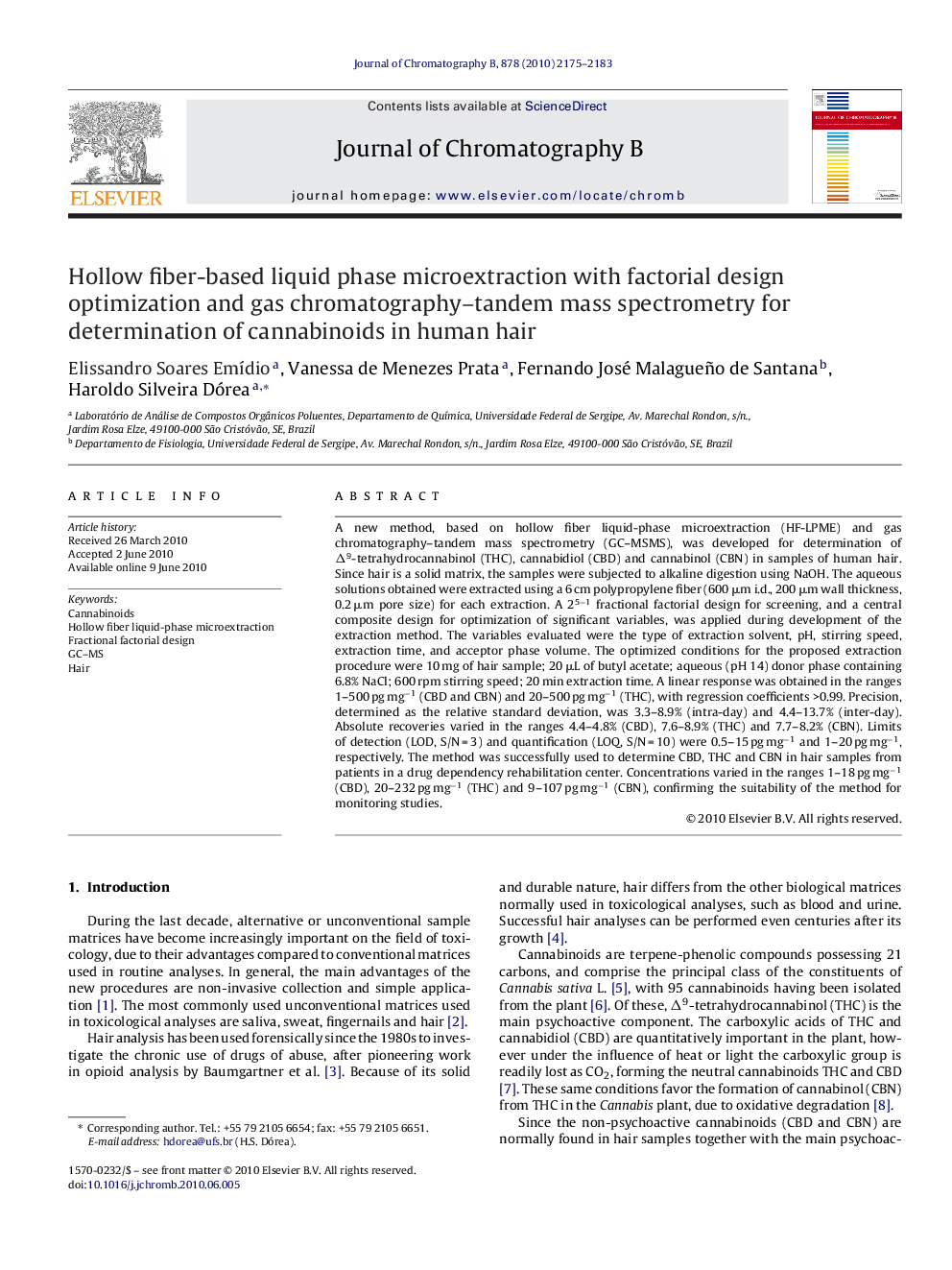| کد مقاله | کد نشریه | سال انتشار | مقاله انگلیسی | نسخه تمام متن |
|---|---|---|---|---|
| 1213836 | 966905 | 2010 | 9 صفحه PDF | دانلود رایگان |

A new method, based on hollow fiber liquid-phase microextraction (HF-LPME) and gas chromatography–tandem mass spectrometry (GC–MSMS), was developed for determination of Δ9-tetrahydrocannabinol (THC), cannabidiol (CBD) and cannabinol (CBN) in samples of human hair. Since hair is a solid matrix, the samples were subjected to alkaline digestion using NaOH. The aqueous solutions obtained were extracted using a 6 cm polypropylene fiber (600 μm i.d., 200 μm wall thickness, 0.2 μm pore size) for each extraction. A 25−1 fractional factorial design for screening, and a central composite design for optimization of significant variables, was applied during development of the extraction method. The variables evaluated were the type of extraction solvent, pH, stirring speed, extraction time, and acceptor phase volume. The optimized conditions for the proposed extraction procedure were 10 mg of hair sample; 20 μL of butyl acetate; aqueous (pH 14) donor phase containing 6.8% NaCl; 600 rpm stirring speed; 20 min extraction time. A linear response was obtained in the ranges 1–500 pg mg−1 (CBD and CBN) and 20–500 pg mg−1 (THC), with regression coefficients >0.99. Precision, determined as the relative standard deviation, was 3.3–8.9% (intra-day) and 4.4–13.7% (inter-day). Absolute recoveries varied in the ranges 4.4–4.8% (CBD), 7.6–8.9% (THC) and 7.7–8.2% (CBN). Limits of detection (LOD, S/N = 3) and quantification (LOQ, S/N = 10) were 0.5–15 pg mg−1 and 1–20 pg mg−1, respectively. The method was successfully used to determine CBD, THC and CBN in hair samples from patients in a drug dependency rehabilitation center. Concentrations varied in the ranges 1–18 pg mg−1 (CBD), 20–232 pg mg−1 (THC) and 9–107 pg mg−1 (CBN), confirming the suitability of the method for monitoring studies.
Journal: Journal of Chromatography B - Volume 878, Issue 24, 15 August 2010, Pages 2175–2183